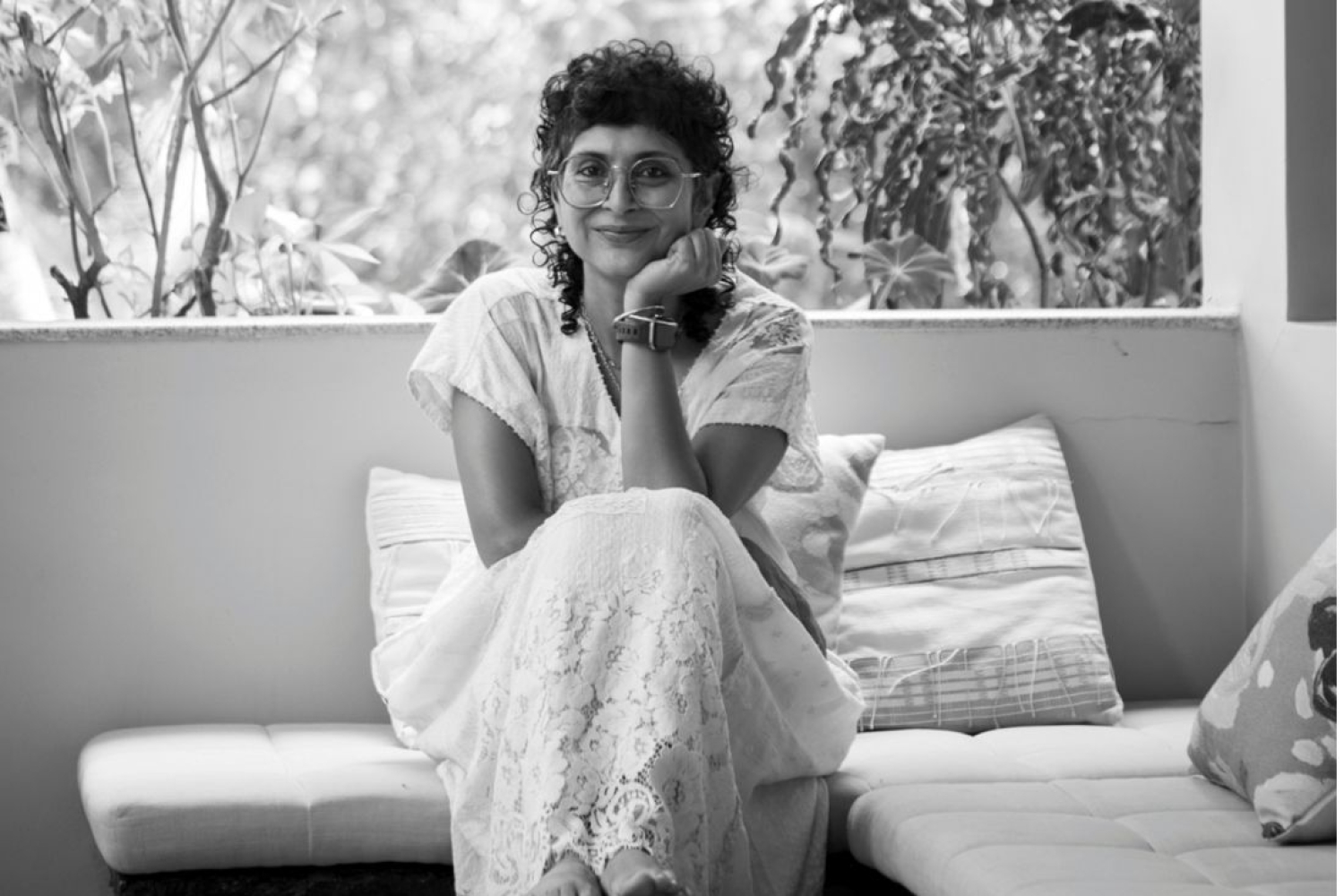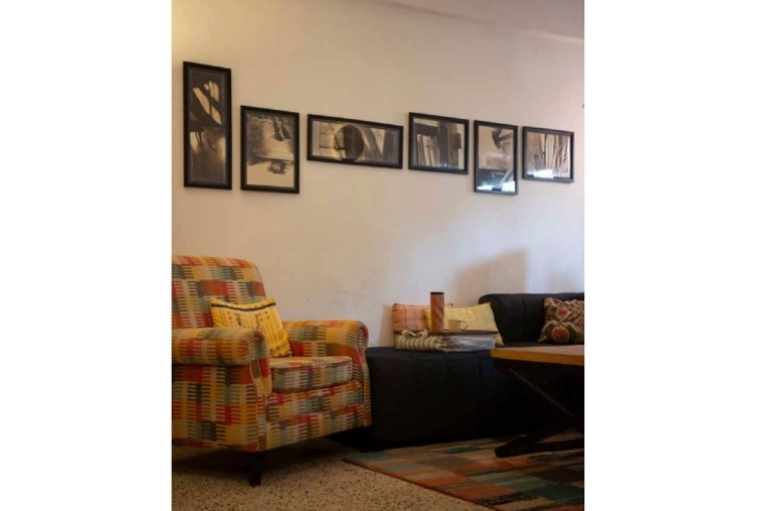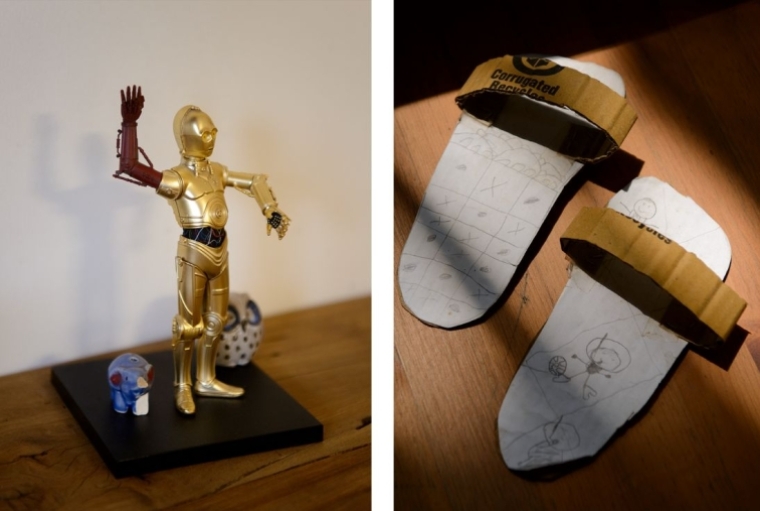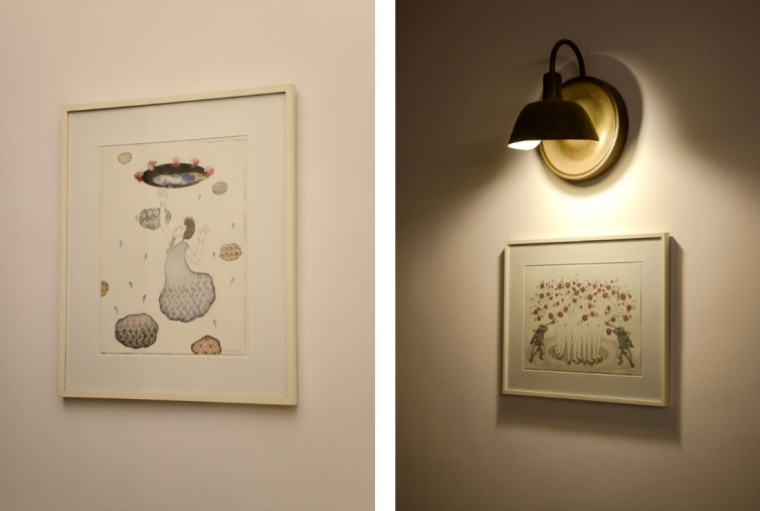

Kiran Rao's Laapataa Ladies has been selected as India's official entry for the Best International Feature Film category at the 97th Academy Awards. The film captures the struggles and resilience of women, offering a powerful commentary on societal norms and gender dynamics, while maintaining a balance of humor and poignancy. We take a closer look at the director's creative space that fueled the film's tremendous success.
Kiran Rao’s creative lab—or studio—is situated in a subtle and unassuming apartment building in Mumbai’s coastal suburb, Bandra. When you enter the apartment complex that is marked by a sprawl of leafy trees, steadily tread up a flight of stairs and arrive on the first floor, there is nothing to suggest that within this almost sixty year old building, is an office that belongs to a truly gifted filmmaker.
On a summer afternoon, Rao greets us in a white lace Pero dress. Her striking curls have been left unbound; her golden-rimmed glasses are perched high on her nose and her effervescent warmth is contagious. The three-room studio, populated by an eclectic mix of furniture, holds ample natural light. Its etched vintage glass windows with wooden-frames, and in-situ beige and grey terrazzo flooring, lend a quiet, old-world charm. When she first arrived here, the windowpanes were covered in white paint, she informs. She took time to manually scrape the paint off, which eventually revealed solid, beautiful teak underneath.
A folding glass-panelled door opens into the adjoining balcony that is bordered green by home-reared potted plants. It overlooks a flourish of fishtail palms, jackfruit, mango and imlie trees that stretch tall towards a powder blue sky—filled with birdsong. The balcony is Rao’s favourite spot. It’s where she spends most of her days (weather permitting), plopped comfortably on a mustard-hued cushioned bench, poring over screenplays, sipping coffee, and deliberating the next big creative endeavour to unleash into the world. The L-shaped bench, of course, is one-of-a-kind. Its base is a solid stone slab that once belonged to an old kitchen counter. It was dutifully salvaged by Rao. Turns out, she’s a crusader for all things repurposed.

There are many things we don’t know about Rao: that is, pertaining to the interiority of her life beyond films. Such as, she possesses a fascination for robots, has an instinctual knack for designing things, or that her love for music supersedes her love for films. For that reason alone, one can quickly, although mistakenly, peg her to be reticent.
Thirteen years ago, she wrote, directed and produced her debut feature film Dhobi Ghat, which won her immense critical respect. Rao was immediately heralded as an impressive talent in the Bolly-sphere for making a gutsy art film. The film even hopped onto the 2012 BAFTA longlist – a solid feat for a rookie director. But then, perhaps unwittingly, she ebbed away from the limelight, taking on a quieter, more self-effacing role of a producer at Aamir Khan Productions, working on films such as Taare Zameen Par (2007), Dangal (2016), Secret Superstar (2017) and Laal Singh Chaddha (2022) – only making her presence subtly known during film promotions, before receding again into the realms of public forgetfulness
With Laapataa Ladies, Rao has remerged into the spotlight with graceful aplomb. After over a decade-long hiatus, the film is her second directorial offering. Laapataa Ladies released on the big screen to generous applause, receiving well-deserved praise for its storytelling gusto. Rooted in Nirmal Pradesh, a fictitious rural state and set in 2001, the film is a heart-warming comedy-drama propelled by a clever plot: two veiled brides, travelling with their husbands, get erroneously swapped on a train journey. The women, both lost (geographically and emotionally) – and who otherwise have little autonomy in a patriarchal setup – get an opportunity to learn deeply about themselves when they’re pushed into unfamiliar territories. Packed with witty dialogues and excellent performances, the film (among other things) has delightful moments of social commentary. The veil itself, for instance, is a striking metaphor – while it obscures a woman’s face, by extension, it completely obscures her identity, or her sense of self. Yet, the film never breaches the wall of being too preachy.
Interestingly, the look tests for Laapataa Ladies, were done in the balcony. The film’s costume team hauled a suitcase full of polyester saris dating back to early 2000s. ‘I have a picture of me sitting here,’ Rao informs, pointing towards the balcony bench, ‘with saris everywhere, and people holding suit material to show me.’

THE BEGINNING
Born in Calcutta, to parents who were nowhere related to the film industry – Rao’s mother was a teacher, while her father worked in a steel company – she grew up in a middle-class family, where reading books and visiting the local theatre to watch plays were encouraged. Her first substantial stint with the performance arts was in school. “I was the class clown,” she reveals, “I would always be given whatever role there was in the school plays. I enjoyed acting, I liked literature. I loved to sing. I loved poetry... But those were the days when you couldn’t do literature or allied arts for a living”. In college, upon the dogged insistence of her parents, she pursued economics, though she continued to dabble in theatre and became the president of the dramatics club. All the while, Rao wondered whether there was a way she could professionally braid her love for the arts with her interest in the social sector.
She decided to pursue a postgraduate degree in filmmaking from Jamia Millia Islamia University in New Delhi. By the time she landed in Mumbai, Rao was twenty five years old and on her own. Her first gig was in advertising, even though making feature films continued to preoccupy her mind. “I didn’t know anyone in the film industry. I didn’t know where to start,” she says. Nevertheless, Rao would proactively fax her reÌsumeÌ and drop in at filmmakers’ offices, where sometimes, she was asked by unwitting receptionists to leave behind photographs. “They’d assume that I had come there to act,” Rao recalls.
Eventually, through hard work, hustling and luck, she got her foot into the filmmaking industry. She describes Lagaan (2001), as a ‘film school in some ways’ that gave her an all-rounded experience in understanding the nuts and bolts of filmmaking, alongside honing people management skills. Rao was in charge of looking after hair, make-up and costume for hundreds of actors on set. “I was stuck in a little hot room where I had to put actors into their wigs and thick layers of Victorian costume”, she says. The experience bolstered her career, and Rao went on to work on films such as Monsoon Wedding, Saathiya and Swades.

THE STUDIO
Rao’s office is surprisingly sparse and minimalist. There is no conspicuous element to indicate that it’s a filmmaker’s den, other than a stack of Laapataa Ladies posters lying ona table, enveloped in a brown paper bag and the presence of a wall-mounted dropdown projector. A collection of six eerie, black and white photographs sprawls across one of the walls, which could be construed as visual snatches from a staged crime scene: blood spillage, an unbolted door, a stack of dusty old books. “It is one of my favourite pieces of work”, Rao enthuses, peering at the images. Her friend-photographer, Sukanya Ghosh (who is also a painter), gifted the collection to Rao when she got married. “Sukanya is also the one who did the art for Arun (a taciturn artist portrayed by Aamir Khan) in the film, Dhobi Ghat”, she informs. “You know, the big exhibition that he has in the film...all those big works?”
The studio is speckled with Rao’s self-designed furniture and fixtures. Turns out, she is remarkably crafty and industrious. “We were shooting Secret Superstar in Baroda and for some time we were shooting away from the city in a very, very small village,” reveals Rao. On one of her trips to the village market, she picked up a grey-tone nivar roll on a whim, carried it home and instructed a carpenter to build a charpai that now rests delicately against the wall opposite the photographs. The studio also has a pair of circular, slate-grey lights designed by Rao, that were carved from thick cement tiles and assembled using wood and LEDs. When they are lit, the lights glow like soft halos in a darkened room, whenever film edits are done in the studio because ‘they give a cinema-like feel to the room’, Rao says.
Two of artist Dhruvi Acharya’s beguiling artworks have also found their abode in the studio. One of them features a woman with amorphous, cloud-like contours, reaching high towards a gaping hole. Her arms appear to be flailing; her mouth is half-open and her hair is swept up. It’s marvellously fantastical. Rao and I step closer to the artwork for inspection. “The woman appears to be reaching towards the vortex, but with hair streaming upwards, it suggests that she is falling”, Rao notes. Through her work as well, Rao has consciously tried to (and will continue to) tackle prickly themes of societal suppression, personal liberation, women’s issues, privilege versus powerlessness, sustainability and climate change. Recently, she started her own production outfit called Kindling Pictures, partnering with actor-director,
Tanaji Dasgupta. Under the banner, she hopes to craft, whittle and produce projects (film and web series) that align with her multi-hyphenate thematic interests. “I want to explore ideas that are important to me as a human being...as a socio-political animal. I hate to say this, and it sounds like I’m some sort of social reformer but I would like to tell stories that move the needle in some way or look at solutions for some of our problems, or at least, change perspective on some of our concerns”.
The studio space has tchotchkes that lend an insight into Rao’s personality. On one of the shelves, the endearing figurines of the astromech droid, R2-D2 and its trusted companion, C-3PO, take centre stage. Rao is a Star Wars fan and sheepishly admits to having sported a R2-D2 pendant for a considerable period.
Also on the shelf is a pair of small-sized slippers, fashioned from cardboard. It was made by her son when he was five or six years old. Rao gently picks them up and admires them. “Azad used to love cutting and working with his hands”, she says, tracing her finger over the phrase ‘SK-8’ written in pencil. “He was into skateboarding at the time”, she explains, before turning our attention towards a plethora of books in her studio that range across a spectrum of genres, including Daya Pawar’s Baluta, Vanishing Acts by Ranjit Hoskote and books featuring the oeuvre of greats like Man Ray and Eisenstein.
Throughout her career, Rao has creatively vacillated between writing screenplays, directing and producing films. It is directing though, that truly sings to her. “When you are directing, if you have not written the material yourself, it can be very freeing”, observes Rao, remarking on the ability to push and pull the narrative like clay and mould it according to one’s personal vision. She also believes in layering the screenplay with ideas. For Laapataa Ladies, for instance, she wanted to give the film a more comical flavour, which was absent from the original; and she wanted to flesh out the character of the slimy police officer (played craftily by Ravi Kishan). It was Rao, who worked with writer Sneha Desai to weave in such charming, yet complex characters into the storyline.
Under the Kindling Pictures banner, Rao currently has a few projects in the pipeline that her team is working on, but these are still in their embryonic stage to discuss at length. However, one truly hopes that she directs another masterpiece soon.
Words Radhika Iyengar
Photography Karan Kumar Sachdev